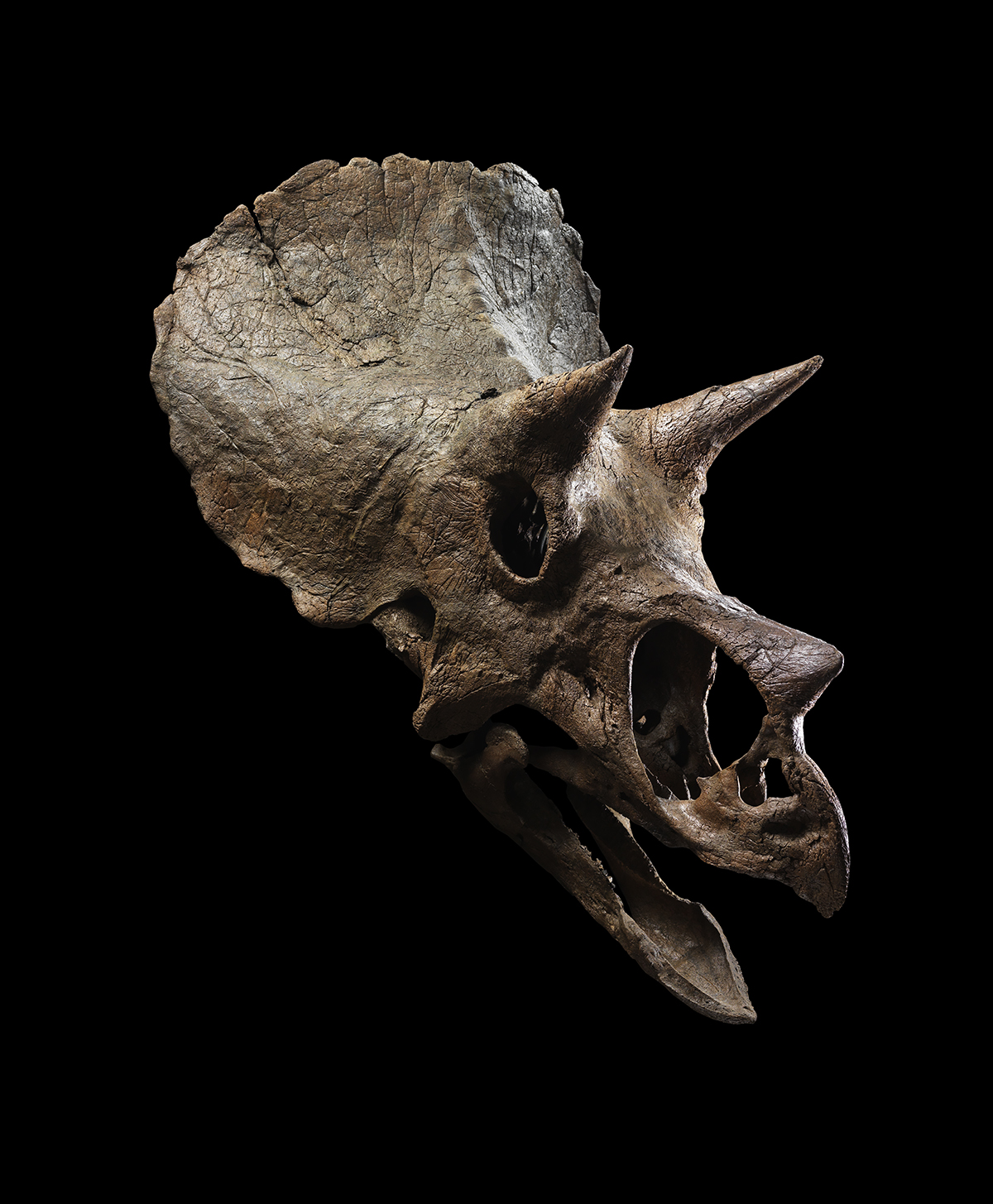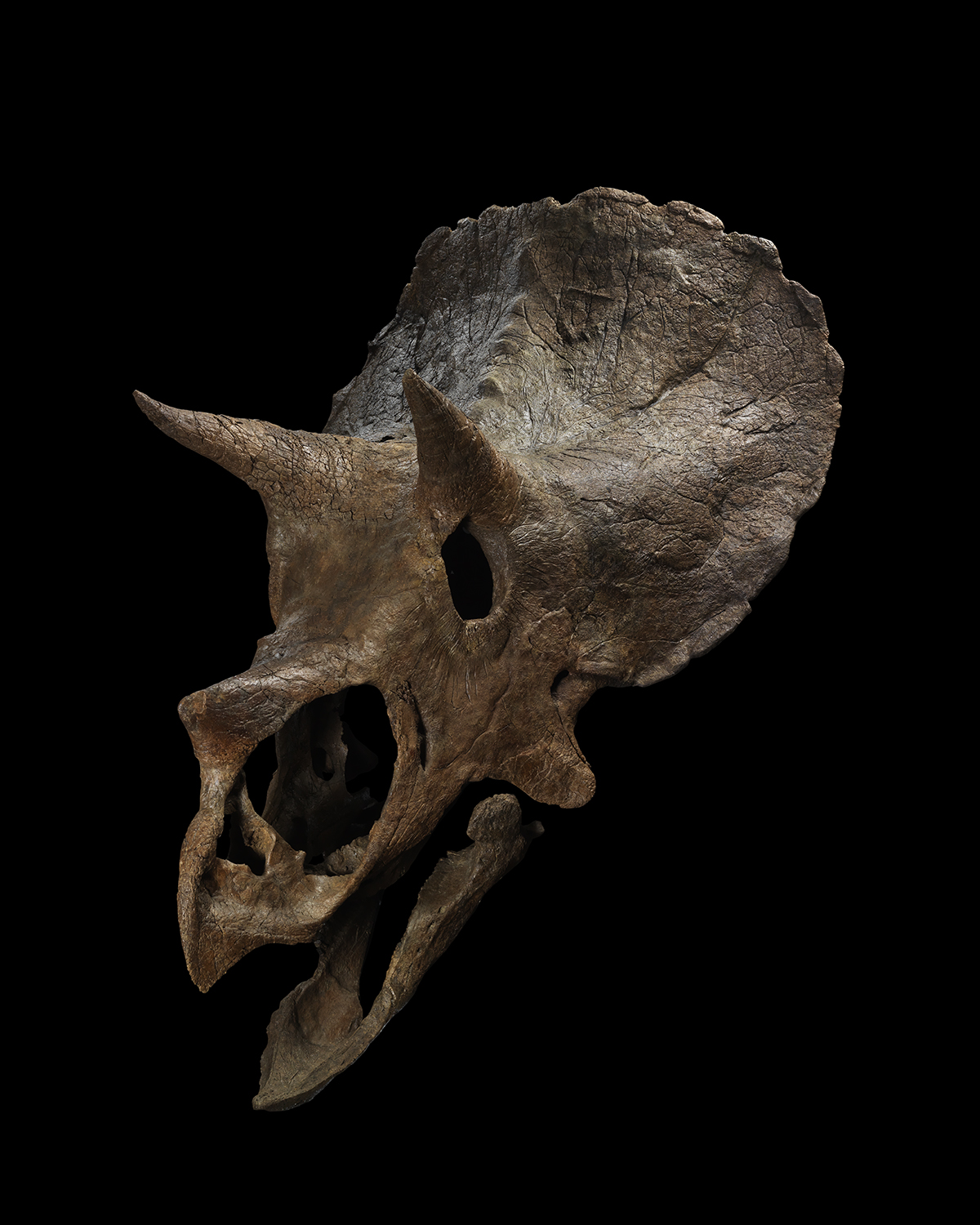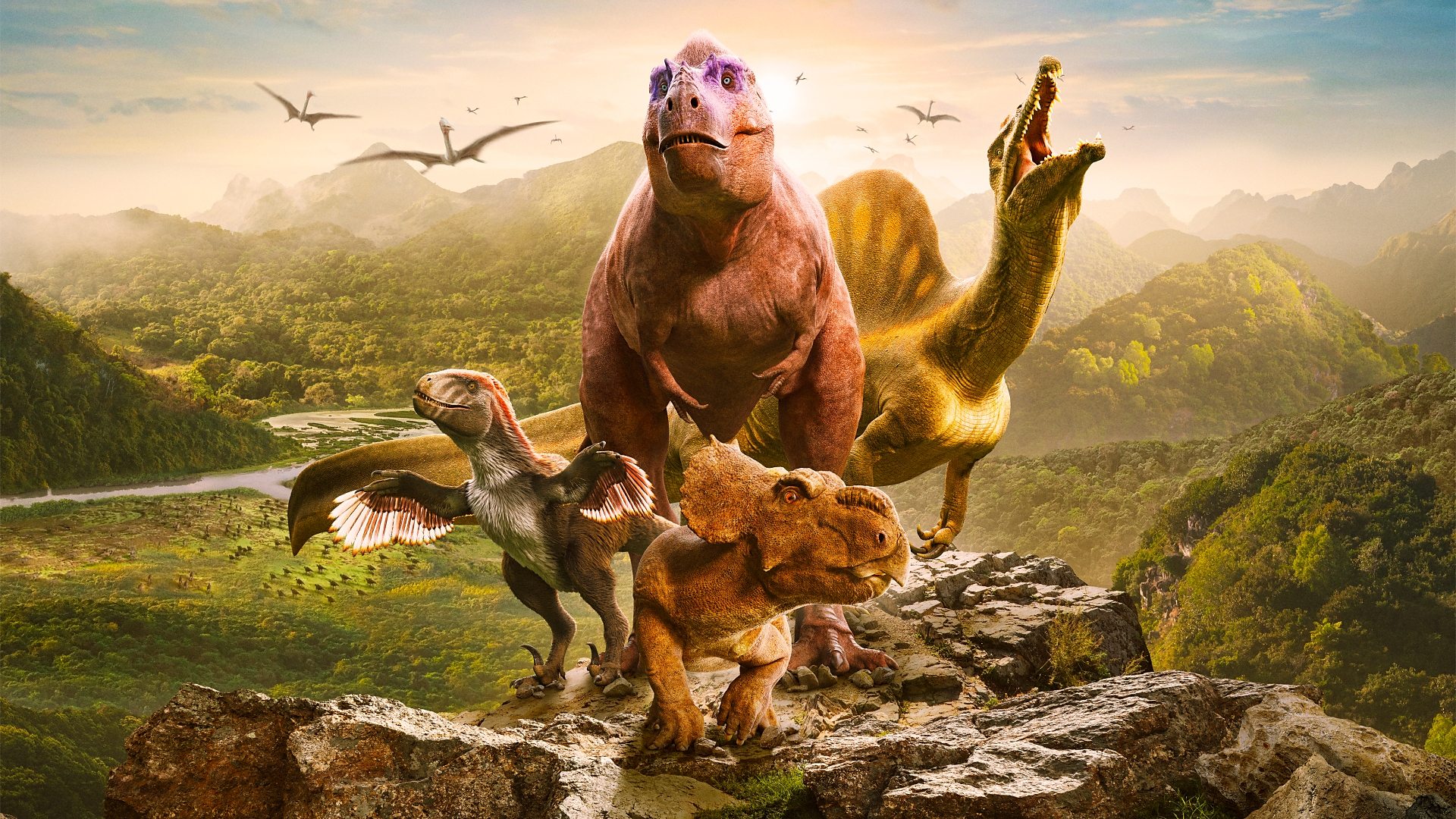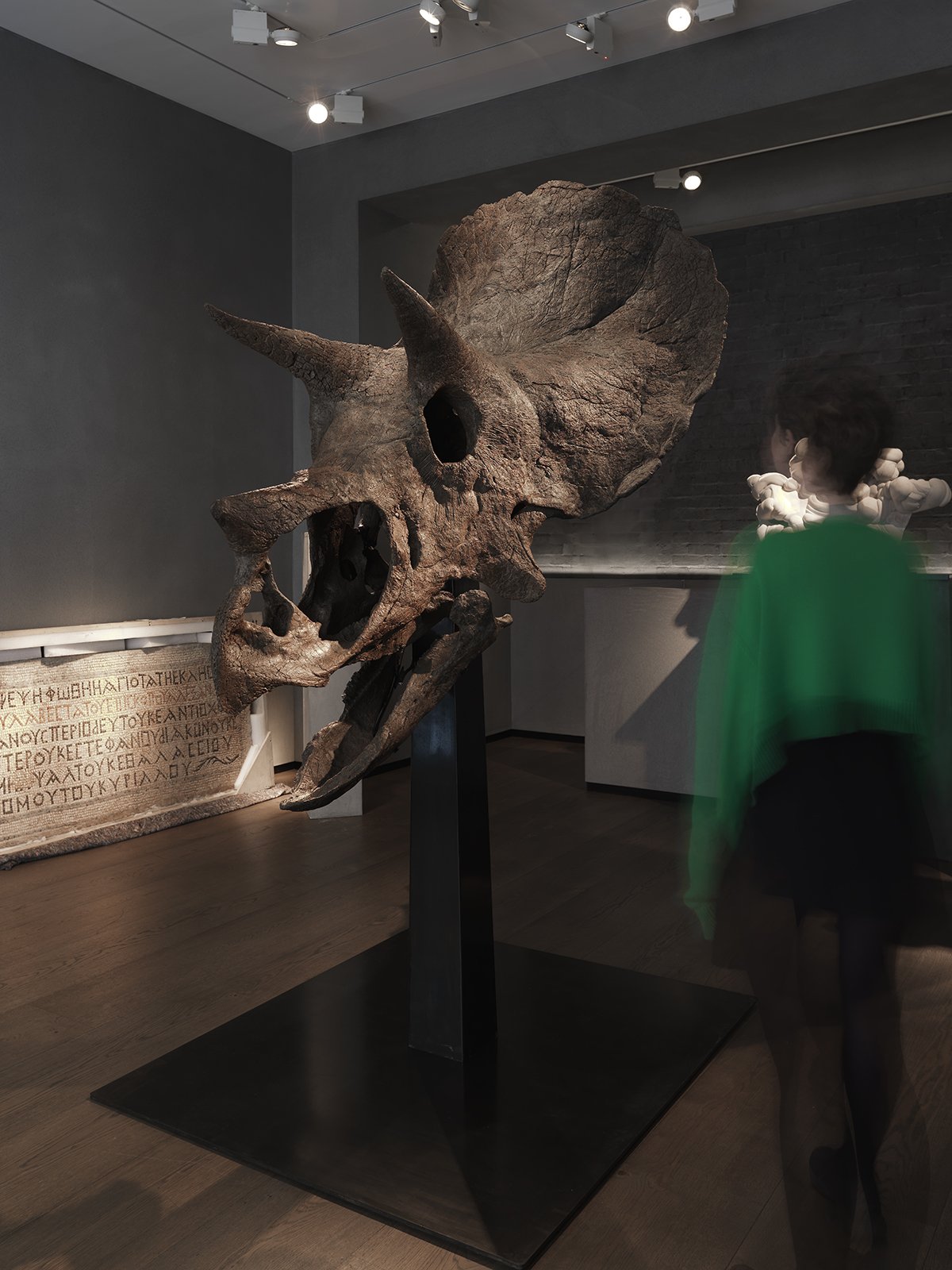Journal
Published 5/8/2025
Published 5/6/2025
Published 5/7/2025
Published 5/8/2025
Published 5/16/2025
Published 6/25/2025
Published 7/18/2025
Published 10/21/2025
Walking with Maple: A Real Triceratops in Mayfair
Published 27/05/2025
Read time: 3min
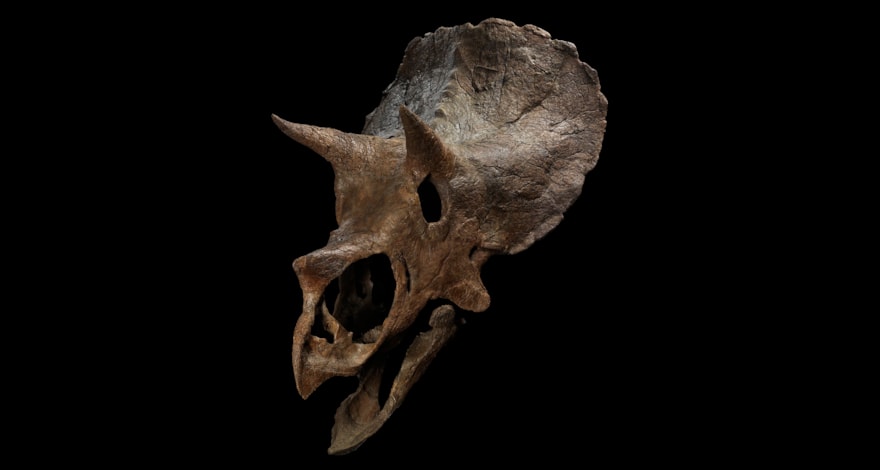
Dinosaurs, with their awe-inspiring scale and dramatic mass extinction, continue to capture the public imagination like few other subjects. They are both nostalgic and timeless, igniting a sense of wonder across generations. From popular culture to cutting-edge palaeontology, dinosaurs consistently draw global attention, both in science and the arts.
Among them, few are as instantly recognisable as the Triceratops. With its broad bony frill, parrot-like beak and three distinctive facial horns, it has become an icon of prehistoric life. The genus name means “three-horned face”, and the creature’s appearance is both formidable and strangely endearing.
The first known remains of a Triceratops were discovered in 1887 in Colorado. Initially believed to belong to a species of extinct bison, the fossilised horns were re-identified by American palaeontologist Othniel Charles Marsh, who formally described Triceratops horridus in 1889 and Triceratops prorsus in 1890. A fully mounted skeleton, named Hatcher, the first to go on display, was later unveiled by the Smithsonian Institution in 1905 and remains one of the centrepieces of their dinosaur collection.

Hatcher, the first mounted and exhibited Triceratops, went on display in 1905, Smithsonian Institution.
At our gallery on Berkeley Square, we are privileged to host a real Triceratops skull; an extraordinary specimen named Maple. Estimated to be from a sub-adult, nearing full maturity, Maple’s skull measures a remarkable 181 cm from jaw to frill. It is believed that Triceratops reached full maturity around ten years of age, making juvenile and subadult fossils particularly scarce.
Maple was discovered in 2019 in the fossil-rich badlands of Montana and excavated throughout 2020. Following discovery, the skull underwent meticulous preparation, including expert conservation and reconstruction.
Palaeontologists assess age not only by size but also by the development of certain cranial features such as epoccipitals, small bony projections that line the top edge of the frill. These ridges, along with bone texture and suture fusion, help scientists estimate growth stages and age at death.
We were honoured to exhibit Cera, a smaller juvenile Triceratops, closer in size to the BBC's Triceratops Clover at Frieze Masters in 2022, which had these epoccipital bones still visible, where it received notable attention, including a feature in The Art Newspaper. The overwhelming public and media interest affirmed what we already knew- dinosaurs are as culturally relevant today as they were 66 million years ago.
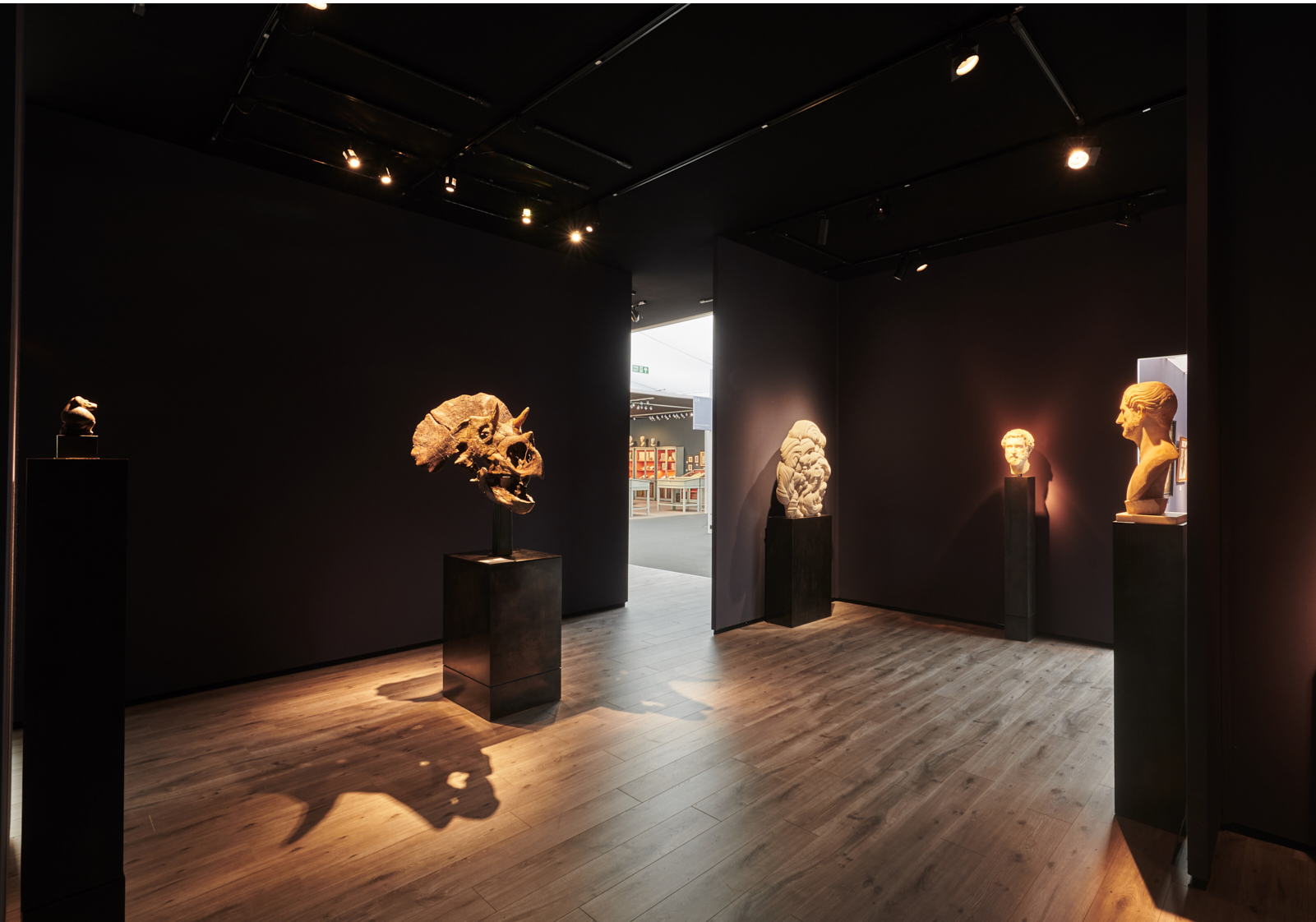
'Cera', A smaller example of a 'Juvenile Triceratops Skull' on show at Frieze Masters, London, in 2022. David Aaron Ltd
Triceratops is known for having had one of the largest skulls of any land animal in history. "It took up about a quarter of its whole body length, which is an unbelievably big skull," notes Dr Paul Barrett, palaeontologist at the Natural History Museum.
Today, fragments of Triceratops fossils are housed in museums and private collections around the world. However, few offer the opportunity to come face-to-face with a skull as complete and striking as Maple’s.
If you are in Mayfair, we welcome you to visit our gallery and experience this extraordinary piece of natural history in person. Maple is waiting.
